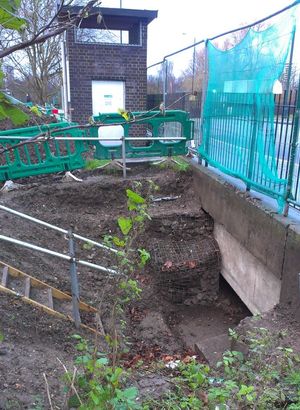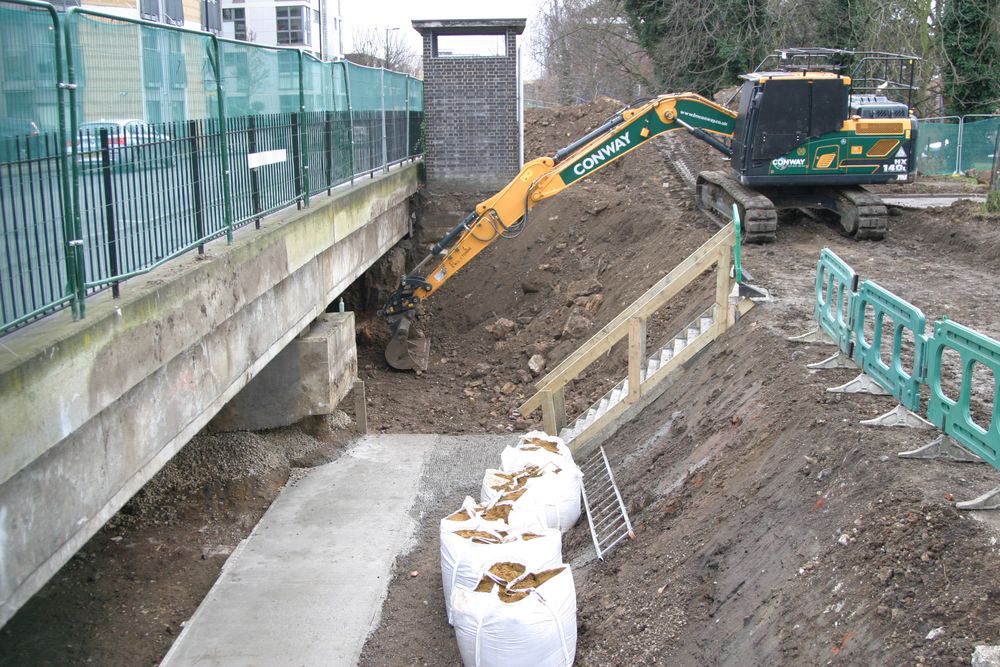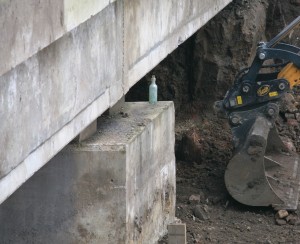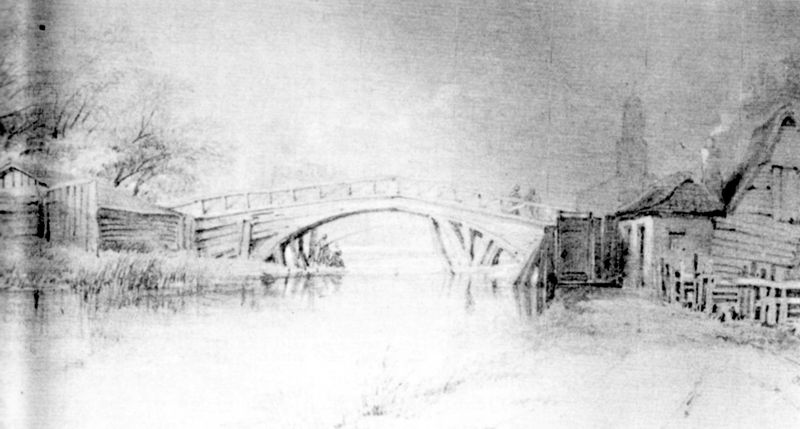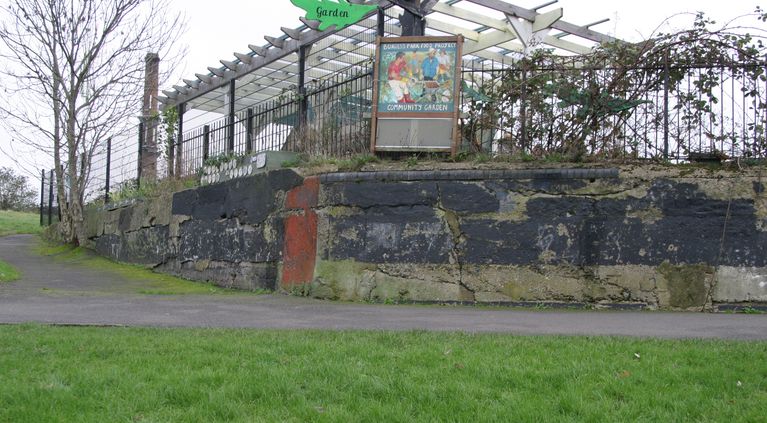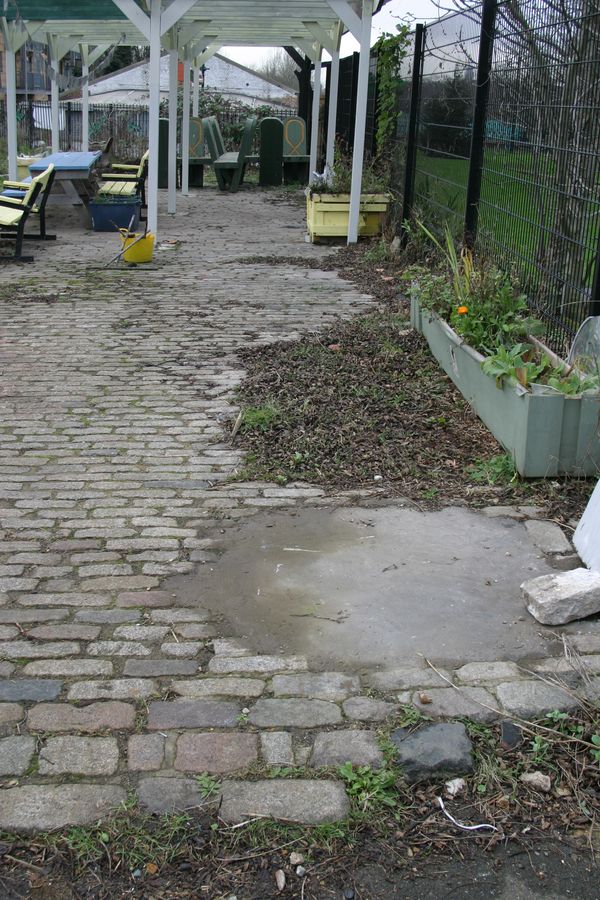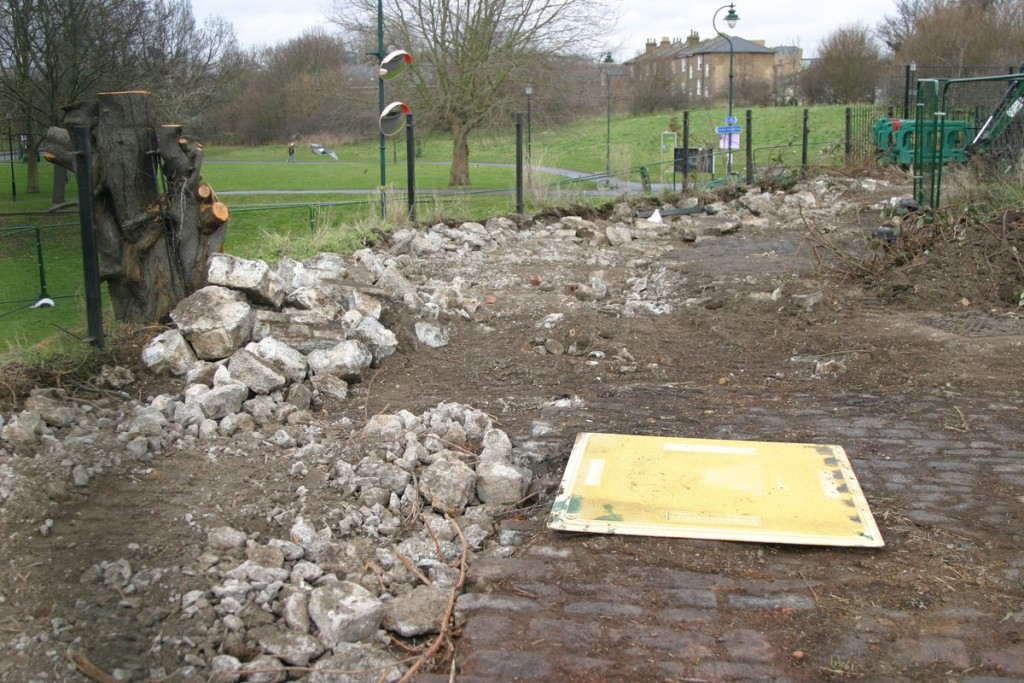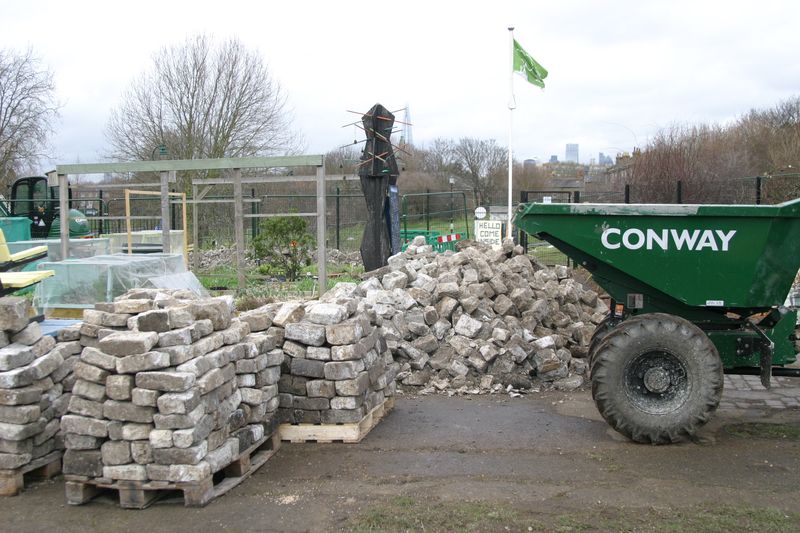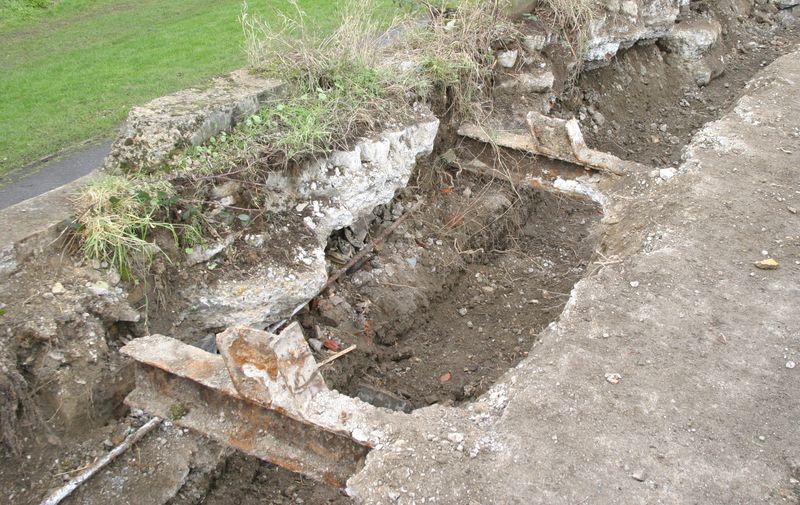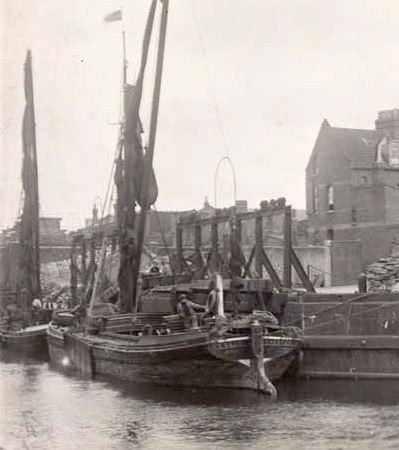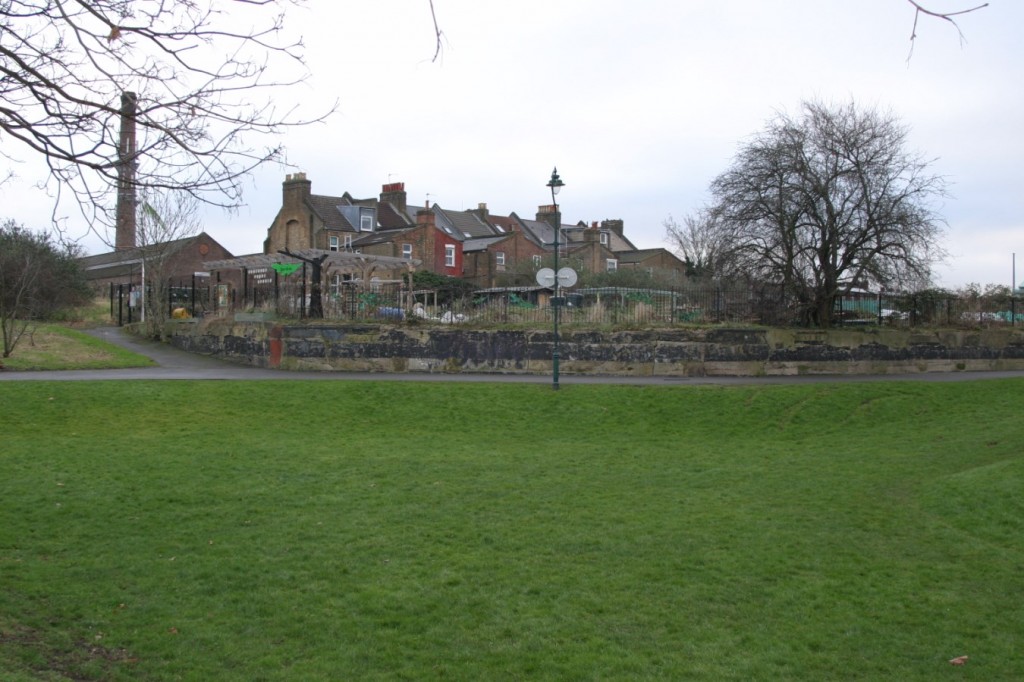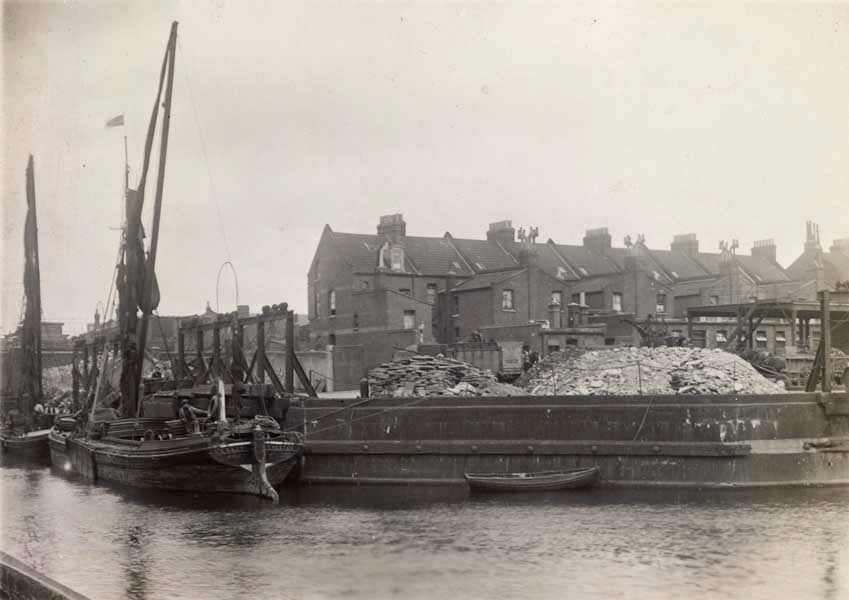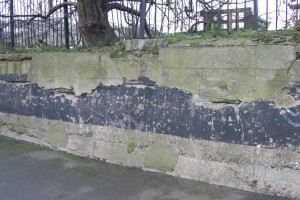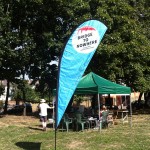That familiar sight in the park, the canal footbridge, as recent park visitors will have noticed, has just been having some extensive work done. It was a Godsend when built in 1905, with the area probably at its most dense with housing, factories and people. It sadly became a Bridge to Nowhere from 1970, when the canal it crossed was filled in. Since the 1990s, it’s even been unsafe for sight-seeing from its grand height of about 10 feet up, and looking in an increasingly sorry state.

Southwark Council had to make the difficult decision to demolish or retain and renovate the bridge. Just leaving it to further deteriorate was not an option. Thankfully, following a survey of the condition in 2021, they decided on repair and renovation. For those of us interested in the heritage of the park, that was the Right Decision!
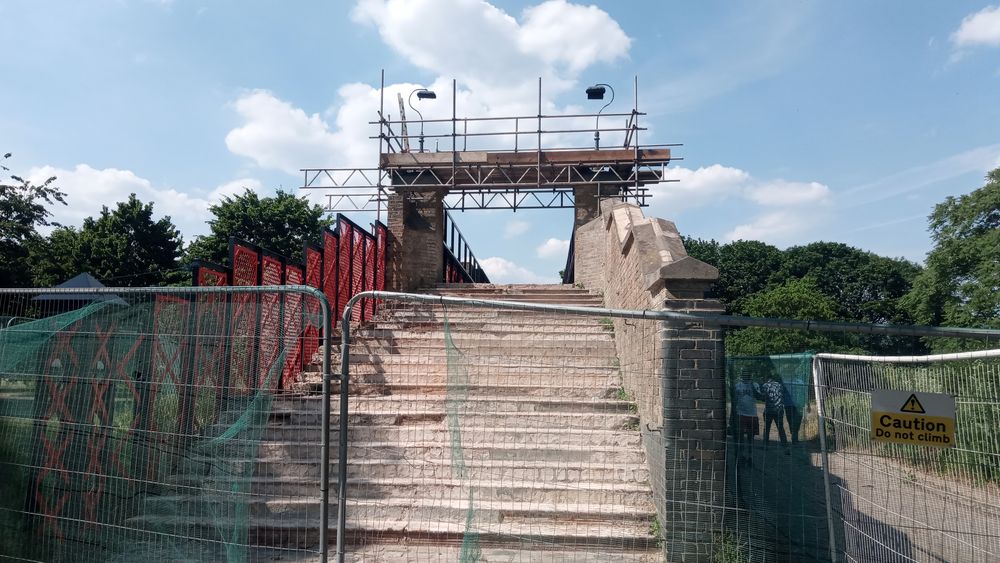
The survey revealed a few areas of deterioration, leading to potential health and safety concerns, and a list of repairs was drawn up:
- Remove and replace footways on the bridge deck
- Carry out replacement or repair of deteriorated transverse and parapet beams
- Replace existing spreader beams
- Break out eroded brickwork on the south abutment and replace with matching new
- Supply and install new concrete coping stones along top of existing wall
- Repair all cracks in existing brickwork and pointing
- Sandblast all metal parts and re-paint to original colour
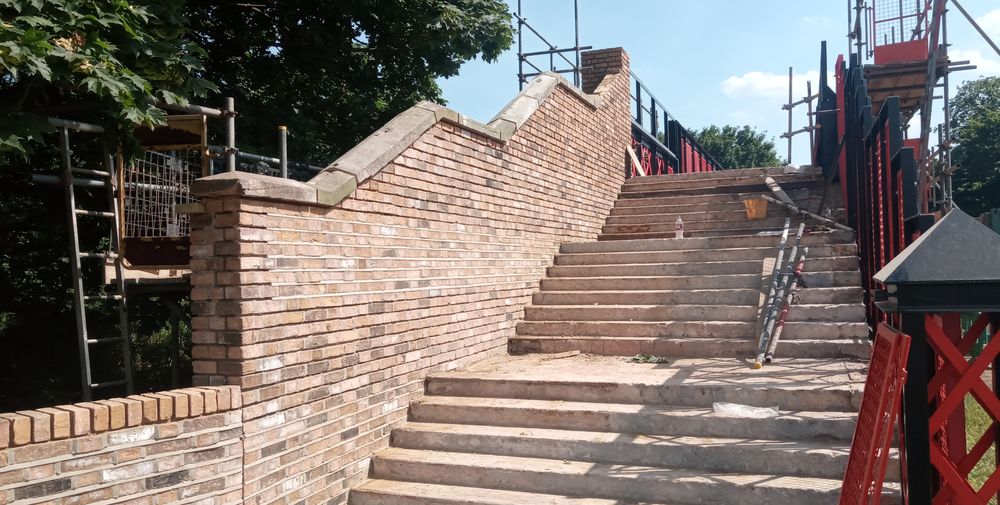

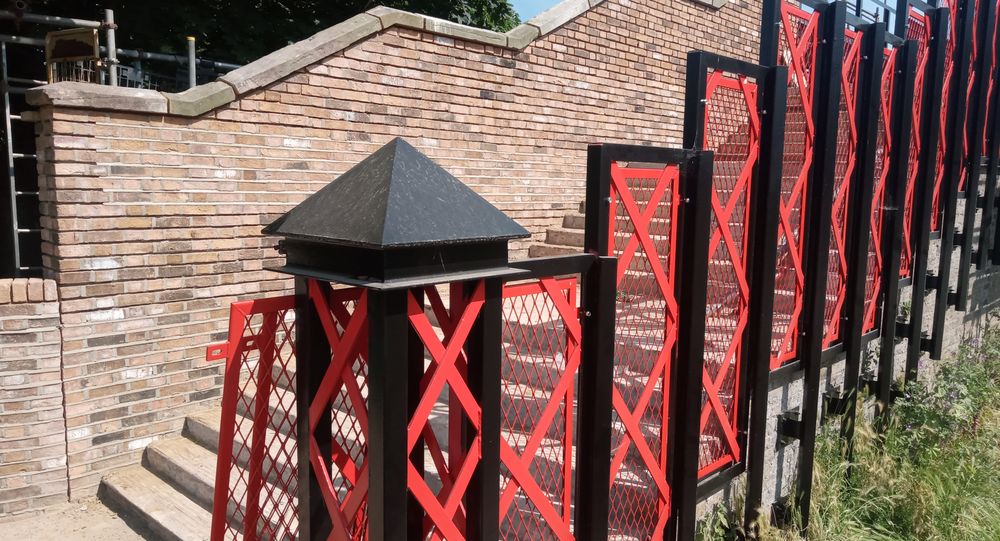
Work started in April 2023, and was scheduled for 3 months at a cost of £323,553, sadly around 100 times the original cost of the bridge in 1905! But it’s a thorough job and it’s now looking really smart. All the TLC should ensure that this great symbol of Burgess Park survives well into the 21st century. AND, we won’t need to change the name of this website!

Read more about the history of the building of the bridge on our dedicated page.
Stop Press!
The bridge is now open to pedestrians! Check the news here.
